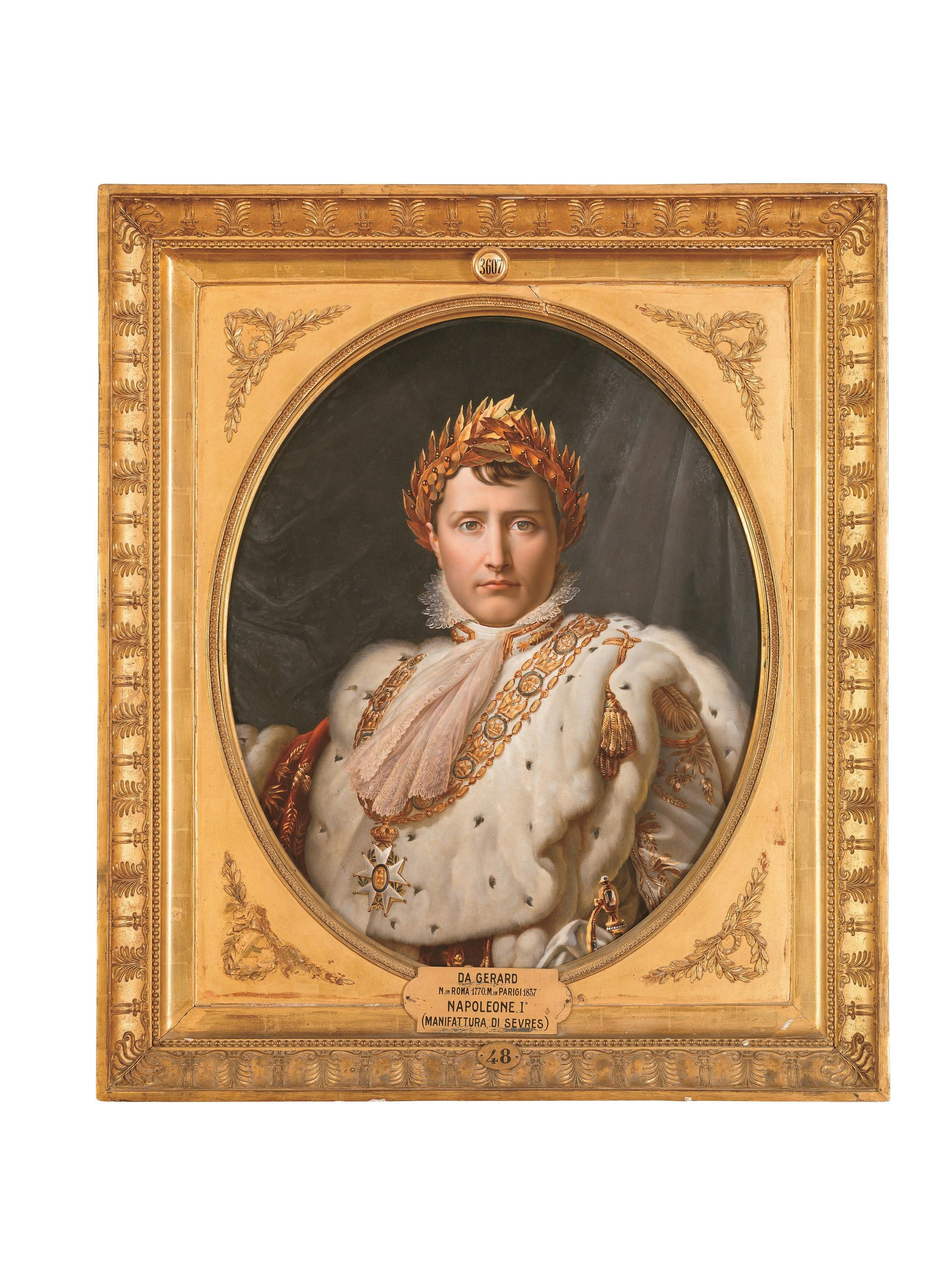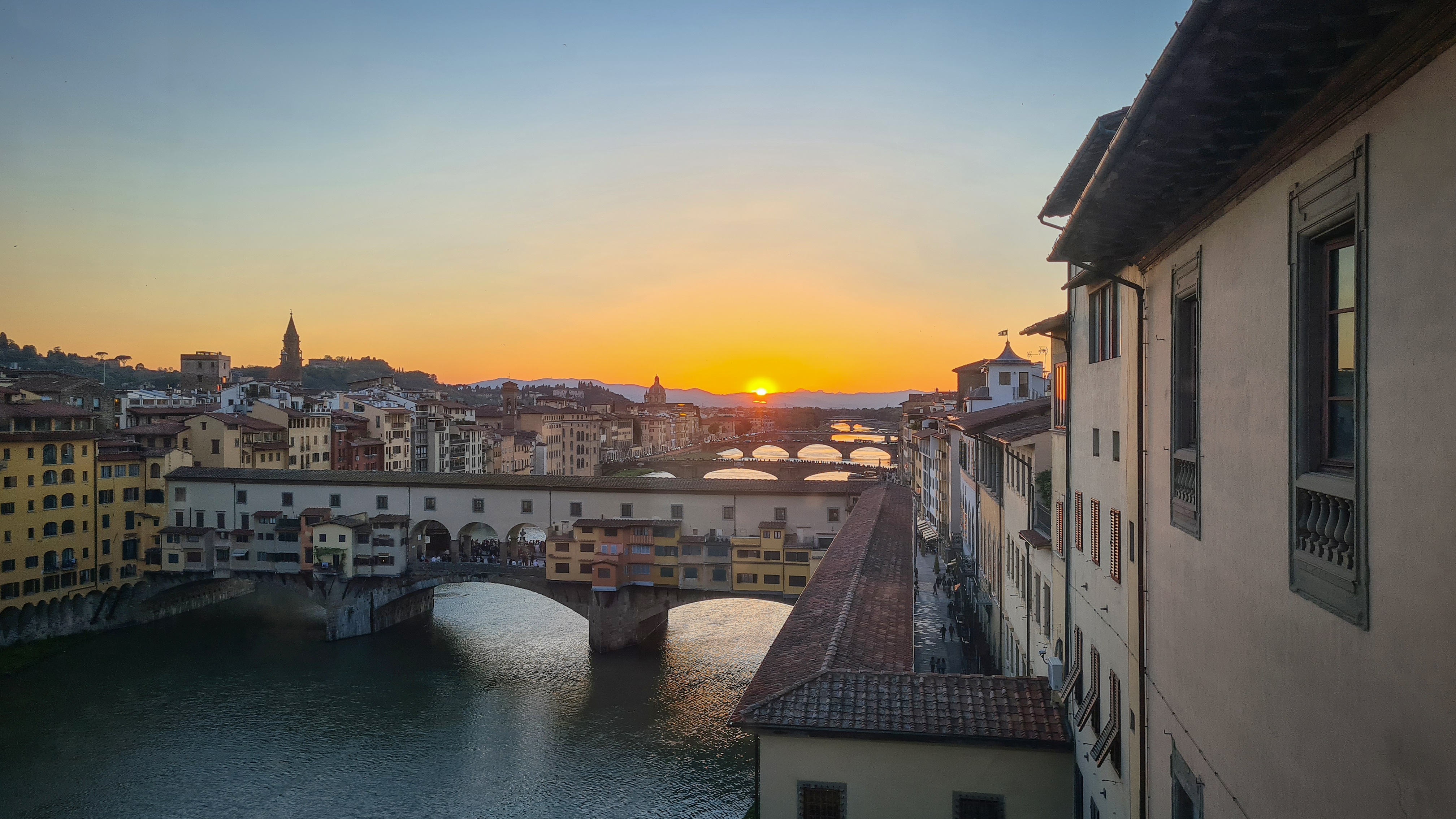Portrait of Napoleon Bonaparte
Sèvres Manufactory
“Manuf[actu]re Imp[éria]le de Sèvres Georget d’après Gérard 1810”
This splendid portrait of Napoleon I was painted on a large porcelain tile, with a view to portraying the emperor to scale. It bears testimony to the notable endeavour required on the part of Sèvres Manufactory to produce such a large tile, which would have risked breaking or bending during the firing process. The portrait is a faithful reproduction of the official one, and depicts Napoleon wearing the robe he had worn during his coronation ceremony. It was created by François Gérard in 1810, as specified in the inscription on the back of the tile, which also bears the name of the decorator, Jean Georget. Georget had studied under painter Jacques-Louis David and exhibited his works at the Salons from 1796 until at least 1801, when he began working in the factory, even if we do not know where he was trained in the art of decorating porcelain. Besides, this technique, referred to as miniature painting, was extremely complex: only a skilled painter could recreate the image to maximum effect, usually copying it from the original one. The introduction of this type of production can be traced back to Sèvres Manufactory, whose director, Alexandre Brogniart, had sent Swiss miniature painter Abraham Constantin to Florence in1820 to copy the 16th and 17th century paintings in the Royal Galleries onto porcelain tiles. Having received permission, the canvases were then removed from the walls and arranged inside a room, to enable the decorator to reproduce them in a tiny size, during candlelit sessions that would take two or three days.
The difficulty of transporting the copies without firing them led the director to ask the Ginori Manufactory for help. Ginori agreed to let him use their kilns providing that in turn they would teach the technique to some of its most skilled painters. This was how awareness of this type of decoration spread to Doccia and later also to the other factories, becoming a phenomenon of taste destined mainly for travellers and cultured experts in the painting of the previous centuries.
Like other specimens produced by Sèvres Manufactory and preserved in Palazzo Pitti and in the Porcelain Museum, the tile with Napoleon was gifted, in 1811, to abdicated Grand Duke of Tuscany Ferdinand III (at the time Duke of Würzburg), to mark the baptism of Ferdinand’s godson, who was the son of Napoleon Bonaparte and his second wife Marie Louise, Duchess of Parma

